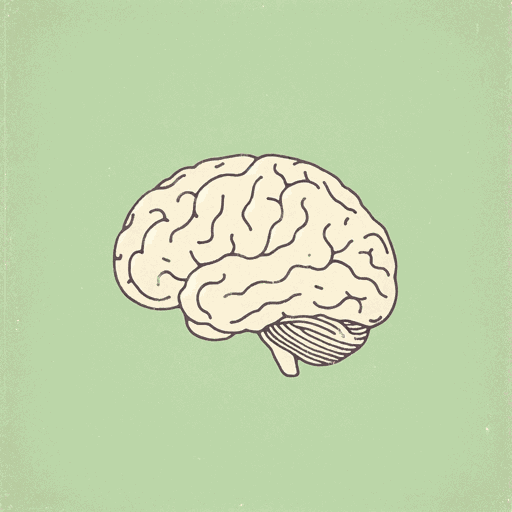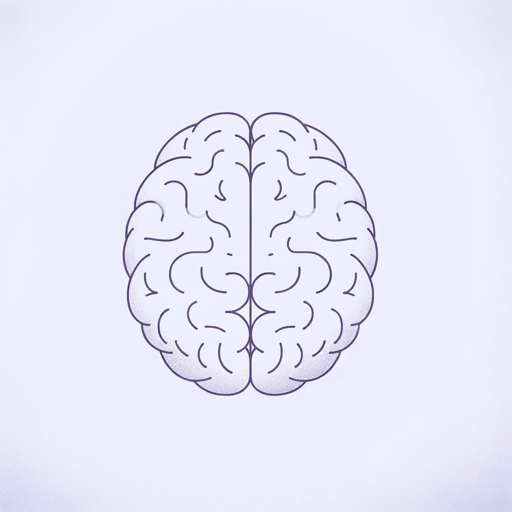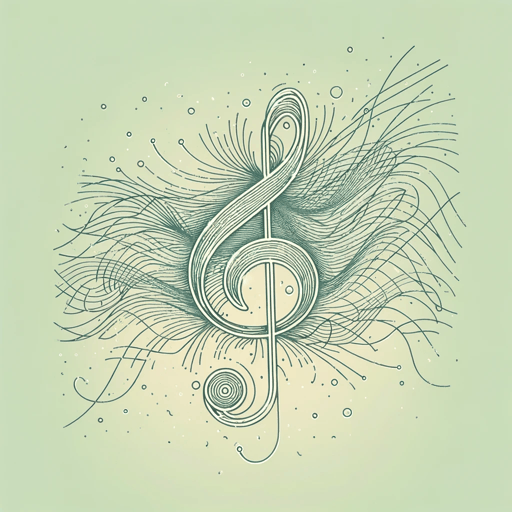56 pages • 1 hour read
Oliver SacksMusicophilia: Tales of Music and the Brain
Nonfiction | Book | Adult | Published in 2007A modern alternative to SparkNotes and CliffsNotes, SuperSummary offers high-quality Study Guides with detailed chapter summaries and analysis of major themes, characters, and more.
Summary and Study Guide
Overview
Musicophilia is a nonfiction book by Oliver Sacks, a prolific writer and neurologist whose books seek to bridge the gap between scientific and humanistic understandings of the human mind. Sacks compiled his case studies, personal experiences, and relevant neurological research to illuminate the power of Music as a Tool of Adaptation, Resilience, and Healing, to make the case for Music as an Innate Human Characteristic, and to explore The Limits of Knowledge in Musical Neurology. Musicophilia was originally published in 2007 but features case studies from as far back as 1965. As in his other books, Sacks writes about complex scientific topics for a general audience, using neuroscience to explore concepts most often associated with the arts and culture.
This guide utilizes the 2008 Vintage Books Trade Paperback edition of the book.
Summary
Musicophilia is a scientific, philosophical, and experiential exploration of humanity’s physiological connections to music. Each chapter discusses a different and unique neurological experience of music and the neurological conditions, both genetic and acquired, that make that experience possible. Each chapter includes references to Sacks’s own experiences, his patients, his letters, and various scientific research, and each chapter includes both philosophical reflection and historical context. Sacks opens this exploration by defining the term “musicophilia”: A deep appreciation for and connection to music. Musicophilia may come in the form of creation and composition, of listening, or of song and dance. It may also appear suddenly, as was the case for a man who was struck by lightning and thereafter felt an insatiable need to play the piano.
This introduction is followed by a discussion of musical seizures: Some patients report hearing music during a seizure, while for others, exposure to specific types of music can induce seizures. Musical imagery, or the ability to imagine music in one’s mind, is finely tuned and more accurate than other forms of memory, as Sacks points out. Musical imagery can be voluntary, as when someone purposely imagines their favorite piece or composes a new one, but it can also be involuntary, such as with earworms and musical hallucinations. Referencing several scientific studies, Sacks concludes that involuntary musical hallucinations often occur as the basal ganglia and auditory cortex attempt to compensate for hearing loss. For some people, musical hallucinations are a welcome compromise; for others, they are intrusive and debilitating.
In Part 2, Sacks examines the wide range of facility and interest in music among various populations. He explores the neurological and philosophical reasons behind these differences and poses new questions about the origin of various conditions. He begins by noting how, even among neurotypical people, there is a wide variation in how people respond to and perceive music. Some may appreciate it technically, while others understand it only emotionally. A condition known as amusia, in which people cannot perceive tones or melodies, can appear spontaneously or as the result of a brain injury. It can be temporary or permanent. Sacks describes his own experiences with amusia, when he was temporarily unable to perceive tone in some of his favorite music. He notes that melodic amusia occurs because of changes in the right hemisphere of the brain, while rhythmic amusia can occur in a wide variety of brain areas.
Sacks also explores various rare musical abilities such as absolute pitch (the ability to perceive exact tones), which many if not most people are capable of learning if trained early. Absolute pitch is essential for some musicians and unnecessary or secondary for others. Cochlear amusia occurs when the inner hair cells of the cochlea degrade. When this happens, people may experience an amusia specific to certain tones or octaves. Human ears have evolved to allow people to hear in stereo, as if the music is consuming the room and the mind. This ability can be compromised when someone loses hearing in one ear, but Sacks refers to one man who was able to use visual cues and memory to trick his mind into hearing stereo again. Musical savants are those with particularly extraordinary musical ability, and Sacks explains that savants almost always carry some other condition or deficit that musical ability seems to be compensating for. In particular, children who are blind often show a propensity toward music, and this may develop even when blindness is acquired later. Finally, synesthesia is a neurological difference in which peoples’ senses become combined. This often occurs in relation to music, as some people may see color in relation to specific notes, or even experience specific tastes and smells. Sacks notes that some composers find their synesthesia essential to the compositional experience. Sacks poses various questions about the nature of synesthesia, such as the potential for all humans to have it but lose it, and the question of why specific associations occur.
When a person suffers a serious stroke or brain injury/infection, they may develop amnesia and forget their past, their skills, and who they are. Sacks observes that music can break through the wall of amnesia and bring people back to life who had seemed lost in an abyss. This was the case for Clive Wearing, who forgot almost everything except his wife and his love of music. Clive only seemed like himself while he played, as if while all else had been wiped out, his passion and skill for music remained. Aphasia, a condition leads to challenges in speech communication, responds well to music, and sometimes those who have lost the power of speech can find their words through singing. In a unique case, one woman wrote to Sacks about a patient who rocked and made lurching sounds; she was able communicate with him by rocking along with him. Tourette’s syndrome is another neurological condition which responds to music, as people with Tourette’s find the rhythmic nature of music therapeutic. Many of them report that their tics only vanish when they play music. Both Sacks and another woman he knew were able to recover from nerve injuries through music; the rhythm and structure of music allowed them to find rhythm in their legs that had been lost in the injury. Similarly, Sacks worked with many patients with Parkinson’s who found that the rhythm and predictable structure of music helped quell and direct their bodies into intentional movement. The neurological basis of music is also shown in the phantom limb phenomenon, as was shown in a pianist who could feel his left (missing) hand playing notes as vividly as if it were there. Sometimes, the overuse of musical skills can lead to harmful effects; this is the case in musician’s dystonia, in which a person’s nerves and muscles slowly refuse to respond and perform the actions they once did. In pianists, this can manifest in the form of a gradual but relentless curling of the fingers.
In the final portion of his book, Sacks explores the more personal, philosophical, and emotional aspects of music. This begins with a discussion of the way music often permeates peoples’ dreams and thus their subconscious. Unlike other aspects of dreams, which are often confused, blurry, or mixed up, music comes through clearly and accurately. Sometimes, people even dream up new compositions. Next, Sacks details the differences in peoples’ passions toward music, as people usually appreciate music both intellectually and emotionally, but some either one or the other (or even none at all). Occasionally, brain injuries can include symptoms of an indifference toward music or an inability to respond emotionally to it. It can also result in a person losing their technical perception of music. Music also has the power to heal grief by bringing it to the forefront of the mind, as happened to Sacks twice in his life. It can act as an individualized therapy to level out the extreme moods of bipolar disorder, and it can express emotions that words cannot. Harry S., a favorite patient of Sacks’, suffered damage to his frontal lobes and could no longer feel emotion except when he was singing; the same has been found in people with sociopathy, who lack a general ability to feel certain emotions. The temporal lobes bear a direct connection with peoples’ emotional responses to music, and somewhat ironically, frontotemporal dementia is often associated with a sudden emergence of musicality that was not there before. As one brain area which previously acted to inhibit another deteriorates, it often leaves remaining brain areas in a state of extreme excitation. Sacks also refers to the hypermusicality of people with Williams syndrome, who almost always share a deep passion for music and who are often skilled in it despite lacking proficiency in other areas. Sacks attended a camp for people with Williams syndrome in which he learned of the power of music for them and for forming community between them. He also speaks of Gloria Lenhoff, a woman with Williams syndrome who could sing opera in 30 languages and whose father helped found the camp. Sacks concludes his exploration of musical neurology by discussing his experiences with people with Alzheimer’s and dementia. In this degenerative brain disease, it is often as if people have lost who they are, but music is one thing that can bring back emotion, memory, thought, and thus the self, if only for a moment. He concludes by musing on the innateness of music in humans, and how it is clear that much is yet to be uncovered about its relationship to our neurology.
Related Titles
By Oliver Sacks

An Anthropologist on Mars: Seven Paradoxical Tales
Oliver Sacks

Hallucinations
Oliver Sacks

On the Move: A Life
Oliver Sacks

Seeing Voices
Oliver Sacks

The Man Who Mistook His Wife for a Hat
Oliver Sacks

The River of Consciousness
Oliver Sacks

Uncle Tungsten
Oliver Sacks

